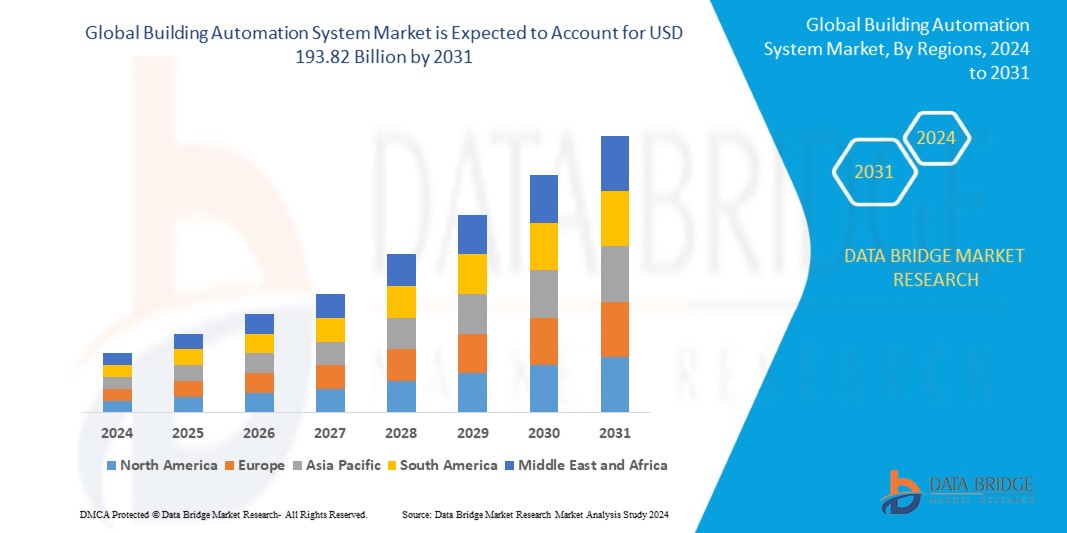Introduction
Building Automation Systems (BAS) play a crucial role in modern facility management, improving energy efficiency, occupant comfort, and operational efficiency in a range of buildings, from commercial offices to large industrial complexes. By centralizing control over various building systems, BAS can reduce energy consumption, streamline maintenance, and even extend the life of building equipment. This comprehensive guide explores the essential components of a BAS and their functionalities, illustrating how these systems work together to create efficient, intelligent buildings.
Definition
A building automation system (BAS) is a centralized control system for monitoring and managing a building’s mechanical, electrical, and electromechanical systems. It automates and optimizes HVAC (Heating, Ventilation, and Air Conditioning), lighting, security, fire alarms, and other systems through the use of sensors, controls, and actuators. BAS combines various systems into a single platform, allowing for more effective management, energy savings, increased occupant comfort, and easier building maintenance.
Essential Components of a Building Automation System
Central Control Unit (CCU):
The Central Control Unit, also known as the building management system (BMS) server, serves as the core of the BAS. This unit is essentially the “brain” that manages, monitors, and controls all subsystems within the building. It collects data from connected sensors, processes it, and sends commands to various controllers throughout the building to maintain optimal conditions.
A CCU usually has a user-friendly interface, allowing facility managers to monitor and adjust system settings as needed. It may include:
- Dashboards: Visualizations for energy usage, equipment performance, and environmental conditions.
- Alerts and Alarms: Notifications for system faults, equipment failures, or any anomalies.
- Historical Data Logging: Storage of data for analysis and reporting, aiding in predictive maintenance and troubleshooting.
Controllers:
Controllers act as intermediaries between the central system and the various components in the building. Each controller is programmed to manage specific systems, like lighting, HVAC, or security, based on inputs from sensors and commands from the CCU. Controllers can be broadly categorized into three types:
- Direct Digital Controllers (DDC): These are used for precise control and are often employed in complex systems like HVAC.
- Programmable Logic Controllers (PLC): Commonly used in industrial settings, PLCs are durable and versatile for handling heavy loads and complex tasks.
- Application-Specific Controllers (ASC): These are designed for specific functions, like lighting or access control.
Controllers ensure that each system operates according to the set parameters, responding to real-time data from sensors.
Sensors:
Sensors are essential components that gather environmental and operational data throughout the building. These devices measure various parameters, which are then processed by the CCU and controllers to maintain desired conditions. Key types of sensors include:
- Temperature Sensors: Monitor indoor temperature to ensure comfort and energy efficiency in HVAC systems.
- Humidity Sensors: Measure moisture levels, which are important for both occupant comfort and equipment longevity.
- Occupancy Sensors: Detect presence or absence of people to optimize lighting, HVAC, and security.
- CO2 Sensors: Monitor indoor air quality to maintain healthy ventilation levels.
- Light Sensors: Measure natural light levels to adjust artificial lighting and reduce energy consumption.
By feeding this data to the BAS, sensors enable the system to make real-time adjustments that enhance building performance and occupant comfort.
HVAC Systems:
Heating, Ventilation, and Air Conditioning (HVAC) systems are integral to building automation, as they consume a significant portion of energy in most facilities. BAS integrates with HVAC systems to monitor and control their operation, ensuring optimal performance and energy efficiency. Key HVAC components managed by BAS include:
- Thermostats: Adjust heating or cooling according to temperature data.
- Air Handlers: Distribute the conditioned air throughout the structure.
- Chillers and Boilers: Provide heating and cooling as needed.
- Fans and Pumps: Ensure proper air and water flow for effective HVAC performance.
BAS coordinates these components to maintain comfortable and consistent indoor climates while minimizing energy usage.
Lighting Control Systems:
Lighting control is another critical aspect of building automation, as it directly impacts both energy consumption and occupant comfort. BAS enables intelligent lighting controls that adjust based on occupancy, time of day, and ambient light levels. Common components of automated lighting systems include:
- Dimmers and Timers: Reduce energy usage by adjusting brightness and scheduling lighting based on occupancy or time of day.
- Daylight Harvesting Systems: Use light sensors to automatically adjust artificial lighting based on natural light levels.
- Occupancy Sensors for Lighting: Turn lights on or off depending on whether a room is occupied, helping to eliminate unnecessary energy usage.
Automated lighting systems can significantly reduce energy costs and enhance productivity by providing optimal lighting conditions.
Security and Access Control Systems:
Security systems integrated with BAS help ensure building safety by managing access and monitoring activities throughout the facility. Components of a BAS-connected security system typically include:
- Access Control Systems: Use key cards, biometric scanners, or PIN codes to control who can enter specific areas.
- Surveillance Cameras: Capture and record footage for security monitoring, with some systems providing real-time streaming to the CCU.
- Intrusion Detection: Detects unauthorized entrance via motion sensors, door/window sensors, and glass break detectors.
Integration with BAS allows for real-time security monitoring and even allows the system to respond to security breaches by alerting personnel or automatically locking down certain areas.
Fire and Life Safety Systems:
A fire and life safety system is essential in any building, ensuring the protection of occupants in emergencies. BAS integration with fire and safety systems allows for automatic responses to emergencies, such as triggering alarms, unlocking doors, and adjusting HVAC to prevent smoke spread. Key components include:
- Smoke Detectors and Fire Alarms: Detect smoke or fire and immediately alert building occupants.
- Sprinkler Systems: Automatically deploy in response to detected fires, helping to control and extinguish flames.
- Emergency Lighting: Provides illumination during power outages or emergencies to guide occupants to exits.
This integration ensures that life safety protocols are immediately activated in case of a fire, minimizing risks and damage.
Energy Management System (EMS):
An Energy Management System is a specialized BAS module focused on monitoring and optimizing energy usage. EMS components often include:
- Smart Meters: Track real-time energy consumption, providing data for analysis and optimization.
- Submetering Devices: Break down energy usage by system or zone, allowing for targeted improvements.
- Power Monitoring Devices: Provide insights into energy quality, helping to prevent power surges and equipment damage.
By tracking energy use patterns, EMS can make recommendations or take automated actions to reduce energy consumption, leading to lower operating costs.
Network and Communication Protocols:
Effective communication is essential for a BAS to operate seamlessly. The system typically relies on various network protocols to ensure that all components communicate efficiently with the CCU and with each other. Commonly used protocols include:
- BACnet (Building Automation and Control Networks): An open protocol designed for BAS that enables communication between different manufacturers’ devices.
- Modbus: Another widely used protocol, mainly in industrial settings.
- LonWorks: A networking platform for BAS that allows for interoperability between devices.
The network infrastructure supporting these protocols is vital, as it determines the speed, reliability, and scalability of the entire system.
User Interface (UI) and Reporting Tools:
The User Interface allows facility managers to interact with the BAS, monitor its status, and make adjustments as needed. UIs typically include:
- Control Dashboards: Centralized views of all systems, enabling quick adjustments and monitoring.
- Mobile Applications: Provide remote access to BAS, allowing facility managers to monitor and control systems from anywhere.
- Reporting and Analytics Tools: These tools collect data from various components, helping managers identify trends, generate reports, and make data-driven decisions to optimize building performance.
Benefits of Building Automation Systems
BAS offers significant benefits, including:
- Energy Efficiency: By controlling HVAC, lighting, and other systems, BAS can reduce energy consumption, leading to cost savings and a reduced carbon footprint.
- Enhanced Comfort: Automated systems ensure that indoor environments remain comfortable, adjusting to factors like occupancy and outdoor temperature.
- Reduced Operational Costs: By automating tasks and enabling predictive maintenance, BAS can lower maintenance costs and extend equipment lifespan.
- Improved Safety and Security: Integration with fire, safety, and security systems helps protect building occupants and assets.
Growth Rate of Building Automation System Market
The global building automation system market was valued at USD 90.42 billion in 2023 and is expected to reach USD 193.82 billion by 2031, with a 10% CAGR from 2024 to 2031.
Read More: https://www.databridgemarketresearch.com/reports/global-building-automation-system-market
Conclusion
Building Automation Systems are increasingly essential in today’s buildings, offering enhanced comfort, energy efficiency, and operational savings. By understanding each component and its role, building owners and facility managers can make informed decisions that maximize the benefits of automation. As technology continues to evolve, the capabilities of BAS will only expand, paving the way for smarter, more sustainable buildings.




